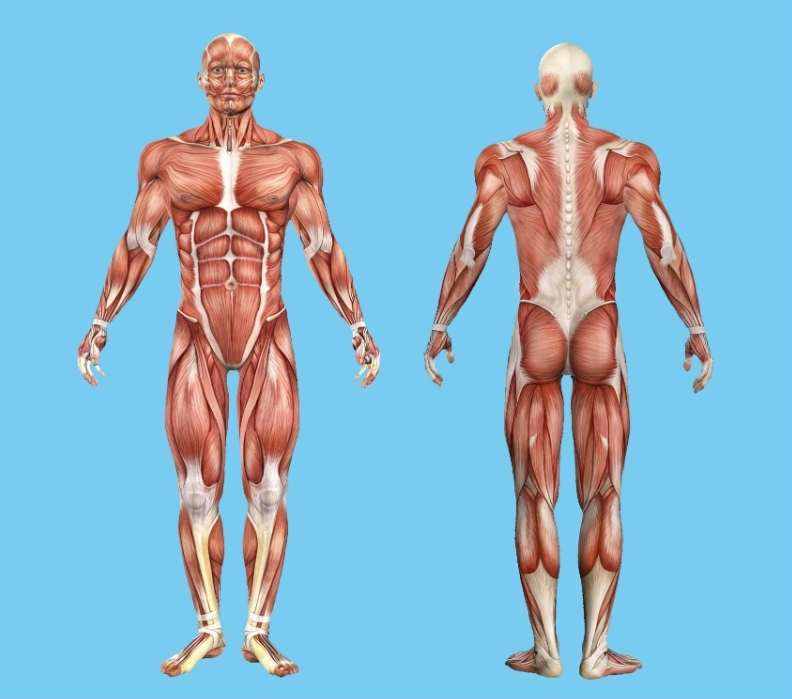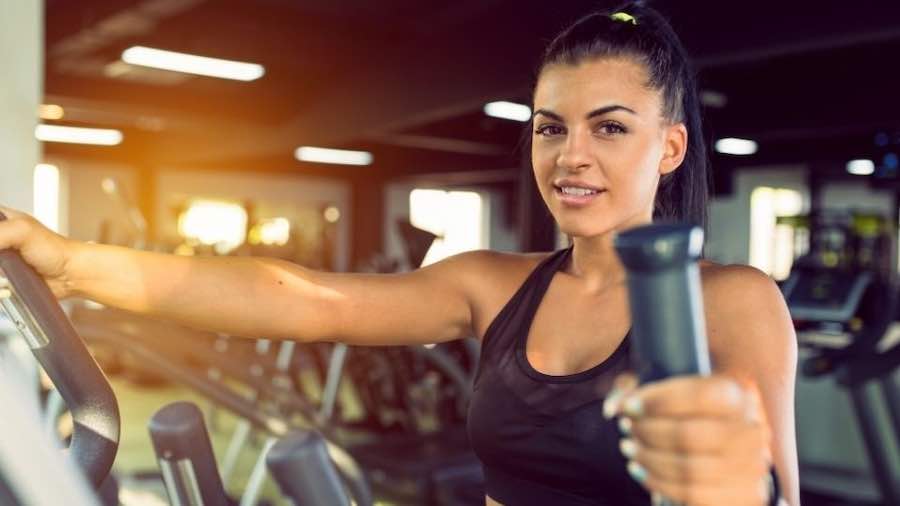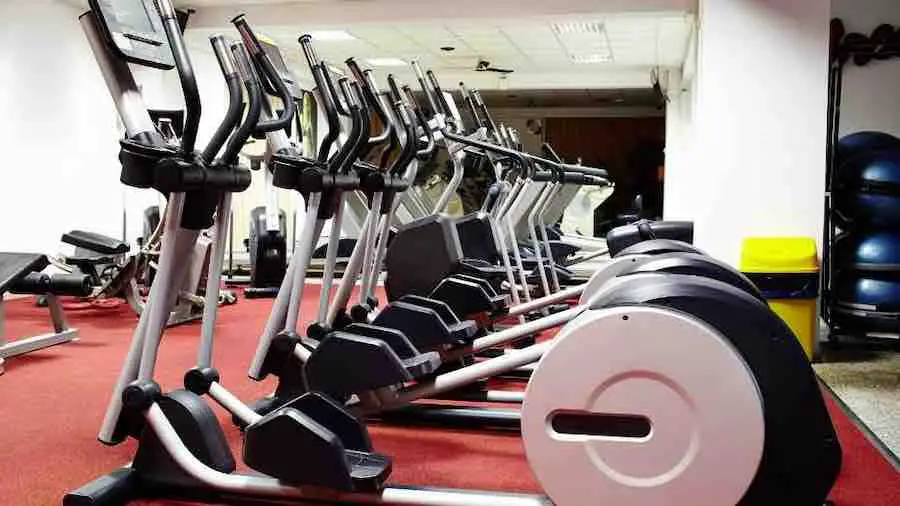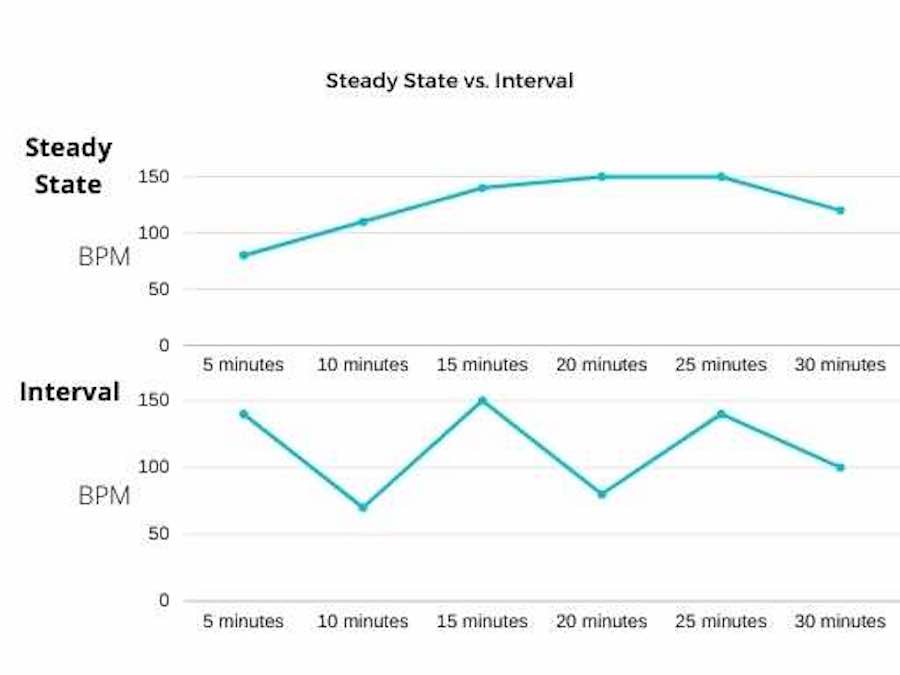Are you looking for a low-impact, full-body workout? You will burn more calories and exercise every major muscle group using an elliptical machine. Running, walking, biking, and other forms of exercise are great. Still, they don’t provide the total body benefits of an elliptical trainer. So, in short, listing all elliptical cross trainer benefits would take us a lifetime.

You will target every major muscle group on an elliptical:
- Quadriceps
- Hamstrings
- Glutes
- Calves
- Core
The elliptical machine is an amazing addition to every home gym. So let’s dive in and find out about each major muscle group you target with an elliptical machine.
Table of Contents
- Lower Body
- Upper Body
- Does an Elliptical Trainer Build Muscle?
- Are Elliptical Machines Effective?
- Conclusion
Lower Body

Quadriceps
Also known as “quads,” these four muscles run down the front of your thighs from your hips to your knee joint and are responsible for knee extension. You engage your quads with every stride you take on the elliptical. You benefit from both the fore/aft motion as well as a slight lateral motion of the elliptical trainer.
One of the best ways to target your quads is to keep the elliptical incline angle lower and the resistance higher. Many mid and high-end home elliptical machines have both of these features.
Hamstrings
Your hamstrings are the muscles in the back of your thighs that run from your glutes to your knees. The hamstring muscles are responsible for knee flexion, which occurs when your knees bend and straighten during an elliptical machine session. You engage your hamstrings in every pedal movement.
For a complete hamstring workout, try moving the pedals in reverse. Some elliptical machines have this ability, while others don’t. Test it out on your trainer to see the difference in the movement and how these leg muscles engage.
Glutes
The glutes are a group of three lower-body muscles that comprise your buttocks. Those three different muscles are the gluteus minimus, gluteus medius, and gluteus maximus.
Ok, so what are your glutes responsible for? The easy answer: they’re a critical component in any movement that involves standing.
Each time you press down on the foot pedals of your elliptical trainer, your glutes assist your quads in producing enough force to press down. The stronger they are, the more efficient your pedal strokes. They will benefit from a combination of incline and resistance; however, they’ll benefit more from a higher resistance level during elliptical workouts. Glutes are the biggest muscles in the body, and everyone needs strong glutes, from ballerinas on a ballet barre to powerlifters with their weights.
Calves
These are small but powerful lower body muscles in the back of the lower leg. The calves run from the back of the knee to the ankle and are considered an endurance muscle group. The contract and release with every step you take, whether on an elliptical trainer or the ground.
Targeting the calves during an elliptical workout is a little more challenging than the other muscles in your legs. You can’t simply change the resistance or incline. Instead, try pressing more with your toes during the downward pedal stroke.
Upper Body
Core
The muscles in your abdominals and lower back are collectively referred to as your core. Much like the calves, these are endurance muscles. You engage your core with almost every movement you make, but you have to be intentional to exercise it.
Elliptical machines do not specifically target or engage the core muscles. However, they are working to keep the body stabilized throughout the session. There are a variety of exercises you can do while using the elliptical to increase core engagement.
One way to target your core during elliptical workouts is to simply contract your core muscles. Brace the muscles of the core by pulling your abdominals in. Think of an imaginary string pulling your navel towards your spine, and you’ll feel the muscles engage.
If your elliptical has dynamic hand grips, you can use them to engage your core, as well. Grip the handles and press back and forth with each stride. In addition to pressing with your arms, try rotating your upper body from side to side to engage your obliques.
Shoulders
Pushing & pulling the arms on an elliptical trainer is what creates the resistance needed to engage the muscles in your upper body. You will certainly burn a few extra calories just by placing your hands on the grips, but using force and increasing speed will certainly boost your calorie burn.
Your shoulders are made of a few different muscle groups and are activated when you lift your arms to grab onto the handles. As your arms move back and forth, your shoulders muscles spring into action. The higher your hands are on the grips, the more your shoulders will have to work to keep them there.
Triceps
Everybody wants toned arm muscles so let’s find out how an elliptical can help. Your triceps are the muscles that run down the backs of your arms. You work your triceps every time you push forward on the handgrips.
Each time the handles move back and forth, focus on pushing forward with the palm of your hand. Although you won’t feel a burning sensation like you might with a bench press, you will activate the triceps muscles. When you do this consistently throughout a 30, 45, or 60-minute workout, you will not only burn more calories; you’ll begin to build some definition as well.
Biceps
Since biceps are the opposite of triceps, you will engage your biceps by making the opposite motion. Focus on pulling the handgrips towards your body and flexing your biceps with each pull.
Does an Elliptical Trainer Build Muscle?

All this talk of different muscle groups might lead you to wonder if the elliptical trainer can help you build muscle. The simple answer to this question is yes, but with a caveat.
You will certainly increase your upper and lower body strength, but if you truly want to build muscle you should strongly consider adding weight training to your regimen. Let’s break down a few key ideas.
Cardiovascular Strength
Ellipticals are designed to primarily focus on your cardiovascular strength and stamina. This means the muscle that’s getting worked the hardest during this type of exercise is your heart. Since it’s the most important muscle in your body, you need a good cardio workout!
However, there are ways to enhance your workout by adding various elements to it. These include:
- Increased Resistance
- Increased Elevation
- Variable Speeds
- Variable Directions
Muscular Strength
Increasing the resistance and elevation (incline) will force your muscles to work harder with each pedal movement. This is great for toning your upper and lower body muscles.
In the context of traditional weight lifting and cardiovascular exercise, this is not enough to build a significant amount of muscle. Although your muscles will get a bit stronger and your endurance will increase as you continue to use the elliptical, you will not build a ton of muscle. If you want to build more muscle, you will need to add resistance training to your fitness routine.
Are Elliptical Machines Effective?

An elliptical trainer is one of the best, most effective ways to exercise your entire body without much risk for injury. This is a must-have for every home gym. Depending on your goals, you can do two key things to use your elliptical equipment as effectively as possible: interval training and steady-state training.
Interval Training
If you’re not familiar with this term, it will change the way you work out and drastically improve your results. It’s ideal if you’re looking for improved performance or if you’ve hit a plateau in your weight loss journey.
Interval training is a style of training that alternates periods of high and low intensity. Some people refer to it as “high-intensity interval training” or HIIT, which is extremely popular in the fitness industry.
Here’s how it works:
Throughout a workout, the intensity is consistently changed. For example, your session might alternate between 1 minute of high-intensity work and 30 seconds of low-intensity work. This pattern continues for the entire duration, except for the warm-up and cool-down.
Although this is a simple example, it illustrates how intervals are used. The logic behind this type of training is to keep the heart working to overcome the previous level of intensity. Continually taking the heart rate up and down during intervals helps build better fitness through endurance, higher aerobic capacity, and a healthier cardiovascular system.
Steady-State Training
This is the exact opposite of doing intervals. In steady-state training, you want to get your pulse to a certain level and maintain it. This type of training is a great option for many people, from beginners to those training for endurance events.
During a steady-state training session, you will simply find a resistance, incline, and manageable speed and maintain it for the entire workout. Steady-state exercise is most effective when performed for at least 30 minutes at a time. It relies on your ability to keep your pulse at an optimal level for maximum fat burn.

Conclusion
As you can see, ellipticals offer something that very few individual machines can match: the ability to improve both upper and lower body muscle tone, increase cardiovascular strength all from a single, low-impact cardio machine. If you’re like me, you can’t afford a personal trainer, but the good news is, you may not need one. So mix up your workouts with both high-intensity interval training (HIIT) and longer steady-state workouts. Challenge yourself with different inclines and resistance levels for optimal improvement. The key is to learn what works for you and your body.
So with all of this info, maybe you’re ready to add an elliptical to your home gym! If so, check out our article comparing two phenomenal home ellipticals by Schwinn: the Schwinn 430 & 470.
We hope you learned a ton from this article. We take great pride in our research and we are completely reader-supported, so please help us out by sharing this on social media and by checking out our product recommendations. Until then, keep training hard and toning those muscles on an elliptical machine!

